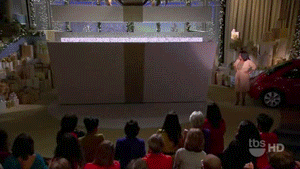Animated Gifs as Cinema
I was planning to put up the next installment in my experimental fiction series today (part 1, part 2), but school has interfered. (I’m writing a paper on Dickens’s use of the narrative present in Great Expectations, plus grading 40-something research papers written in response to Hanna Rosin’s The End of Men: And the Rise of Women.)
In the off chance that you’d like to read something new by me, I recently published an article at the film site Press Play, “Are Animated Gifs a Type of Cinema?” Since then, Landon Palmer has responded with an article at Film School Rejects (“Animated Gifs are Cinematic, But They’re Much More Than Cinema“), as has Wm. Ferguson at the 6th Floor, the New York Times Magazine‘s blog (“On the Aesthetics of the Animated GIF“). I’m planning a follow-up post as well as an interview with Eric Fleischauer and Jason Lazarus, the directors of the gif anthology film twohundredfiftysixcolors, whose premiere I managed to catch a few weeks back. And the Press Play article is itself a follow-up to two articles I posted at Big Other in early 2011: “How Many Cinemas Are There?” and “Why Do You Need So Many Cinemas?”
I’m only just beginning my studies on the gif, so I appreciate any and all feedback.
Loving All These Thieves
 This week I noticed a correspondence between the opening sentence to Great Expectations and the opening of Lolita. I’m interested in the idea of Nabokov stealing from Dickens, a writer he admired and about whom he lectured at Cornell.
This week I noticed a correspondence between the opening sentence to Great Expectations and the opening of Lolita. I’m interested in the idea of Nabokov stealing from Dickens, a writer he admired and about whom he lectured at Cornell.
Here is the opening of Great Expectations:
“My father’s family name being Pirrip, and my Christian name Philip, my infant tongue could make of both names nothing longer or more explicit than Pip. So, I called myself Pip, and came to be called Pip.”
 Here is the opening to Lolita:
Here is the opening to Lolita:
“Lolita, light of my life, fire of my loins. My sin, my soul. Lo-lee-ta: the tip of the tongue taking a trip of three steps down the palate to tap, at three, on the teeth. Lo. Lee. Ta.
“She was Lo, plain Lo, in the morning, standing four feet ten in one sock. She was Lola in slacks. She was Dolly at school. She was Dolores on the dotted line. But in my arms she was always Lolita.”
Note the correspondence between the two openings in terms of wordplay, the repetition of the consonant sound (p- and l-), READ MORE >

